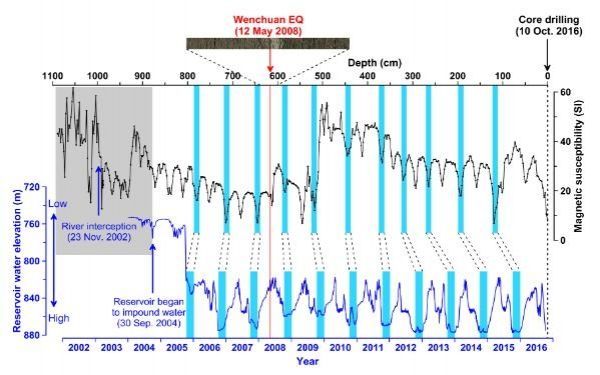The roles of "climate change" versus "tectonics" that dominate erosion and sediment transport over geological time scales have long been a hot topic in Earth science. How to effectively separate their respective roles is a big challenge, like the famous "chicken or egg" question.
A new study led by Prof. JIN Zhangdong from the Institute of Earth Environment (IEE) of the Chinese Academy of Sciences provided a new insight on the interplay between climate and tectonics from a sediment record in the Zipingpu Reservoir around the 2008 Wenchuan earthquake. The findings were published in Science Advances on June 12.
Infrequent extreme events such as large earthquakes pose hazards and have lasting impacts on landscapes and biogeochemical cycles. Sediments provide valuable records of past events, but unambiguously identifying event deposits is challenging because of nonlinear sediment transport processes and poor age control.
The Zipingpu Reservoir, with annually resolved sediments, provides a unique opportunity to document the link between a large earthquake and its sedimentary signature, because it was completed in September 2004 and is located downstream of the area impacted by the 2008 Wenchuan earthquake.
Read more at Chinese Academy of Sciences Headquarters
Image: Chronology of the Zipingpu reservoir sediment core based on the correlation between reservoir water level and sedimentary MS. (Credit: JIN Zhangdong, et al.)


